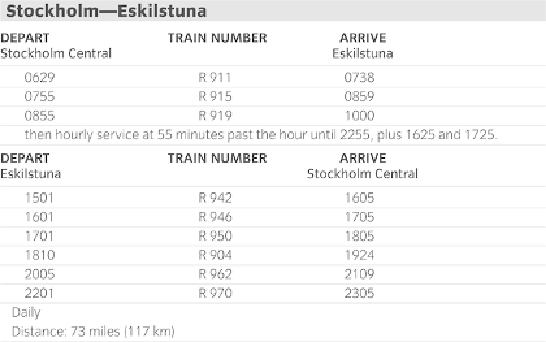Travel Reference
In-Depth Information
Eskilstuna is located in the most populous part of Sweden. Named after the 11th-
century English missionary Sam Eskil, Eskilstuna is the center of the Swedish steel
industry. Its parks and open-area squares, however, make it unlike any other steel
town. A statue of Saint Eskil stands in the churchyard of
Fors Kyrka.
Both the
statue and the church are worth a visit. If you continue your walk along the river-
side, you will find another monument of Saint Eskil on your way to
Kloster Kyrka,
which is easily recognized by its two towers.
Eskilstuna's town charter dates from 1659. In 1971 five surrounding rural com-
munities and the town of Torshälla merged with Eskilstuna. Torshälla is more than
650 years old. Its name was derived from the Nordic god, Thor, who was wor-
shipped at offertory gatherings of the barbarians occupying Torshälla.
Parken Zoo
(zoo park) in Eskilstuna ranks as one of Sweden's most visited
tourist attractions.
Hours:
May and June daily 1000-1700, July and August
1000-1900, September 1000-1700. In addition to its zoological gardens, there are
an amusement park known as the “Tivoli,” a heated swimming pool with waters-
lides, “Phantom Land,” “Flamingo Valley,” and a petting zoo. The zoo is well-known
for its collection of animals that are rare in Sweden, including the world's largest
lizard, “the Komodo dragon,” and a family of white tigers. The white tiger is thought
to be extinct in the wild, but at Parken Zoo, several litters have been born since
1990. Visit
www.parkenzoo.se
.
The city is well endowed with works of art. The
ArtMuseum
(
Hours:
1200-1600
daily) is especially proud of its collection of Swedish art from the 17th century to
the present. Every three or four weeks, contemporary art exhibitions are changed.

Search WWH ::

Custom Search